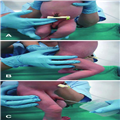Conduct problems and hurtful and uncaring behavior in children as young as 6 years are accurate predictors of violent and nonviolent criminal convictions in young adulthood, new research shows.
Investigators from the Université de Montréal in Canada found that negative behavior at age 6, such as fighting, disobedience, and a lack of empathy, predicted criminal convictions by age 24.
"Most nonviolent and violent crimes are committed by a small group of males and females who display conduct problems that onset in childhood and remain stable across the lifespan," study author Sheilagh Hodgins, PhD, toldMedscape Medical News.
"If their conduct problems could be identified and reduced early in life, this would potentially allow these children to alter their developmental trajectories, live healthy and happy lives, and to make positive rather than negative contributions to our society."
The study is published in the March issue of the Canadian Journal of Psychiatry.
Need for Early Intervention
The aim for the study was to further the understanding of how to prevent crime and thereby reduce the human and economic costs associated with criminal activity, she said.
The researchers examined teacher assessments of conduct problems such as fighting, disobedience, school absenteeism, destruction of property, theft, lying, bullying, blaming others, and a lack of empathy among students at age 6 years.
The 1593 boys and 1423 girls were recruited when they were in kindergarten at French-speaking public schools in the province of Quebec from 1986 to 1987.
The same groups of boys and girls were assessed again at age 10 years. They were also assessed for aggressive behavior at age 12.
The researchers later obtained juvenile and adult criminal records and found that teacher ratings of pupils' behaviors at ages 6 and 10 were associated with criminal convictions between the ages of 12 and 24.
Specifically, they found that boys aged 6 who were rated by their teachers as having the highest degree of conduct behavior problems and hurtful and uncaring behaviors were 4 times more likely to be convicted of violent crimes and 5 times more likely to be convicted of nonviolent crimes than boys with lower ratings.
Similarly, girls aged 6 with high ratings for conduct problems and hurtful and uncaring behaviors were 5 times more likely than girls with lower ratings to have a conviction for nonviolent crimes by age 24.
Boys who had high ratings for uncaring and hurtful behaviors but who did not have conduct behavior problems also had an elevated risk for violent and nonviolent crime convictions, and girls with high ratings for uncaring and hurtful behaviors but no conduct behavior problems had a high risk for nonviolent crime convictions.
Such students, Dr. Hodgins added, require "interventions to reduce these behaviors at an early age, which, in turn, will promote better relations with family, peers, and teachers, better academic performance, and the development of prosocial skills."
Pediatricians may be able to identify children who exhibit these behaviors by observing and talking to the children and their parents, she added.
"When these problems are thought to be present, families could be referred to child psychiatric services or other agencies that provide parent training and other interventions aimed at reducing these problems," she said.
Reservations
Commenting on the study for Medscape Medical News, Michael Brody, MD, a child psychiatrist in private practice in Potomac, Maryland, said he has reservations about the study.
Dr. Brody, who was not involved in the research, said he was concerned about "putting a label on a child as young as 6. If you label the child as likely to become a criminal, it could have problems down the road."
Nevertheless, if labeling a child would result in some guarantee of treatment or intervention, it might be worthwhile, Dr. Brody said.
"Often, it does not. In fact, this is a major problem with all of these studies that call for intervention. In our country, there just are no facilities to deal with these children. Even when the kid does something really terrible, who is going to see the child? All the services are overwhelmed. The resources to deal with these problems are nonexistent. Therefore, I have problems about the practicality of this research," he said.
Finally, Dr. Brody questioned the ability of teachers to accurately predict criminality.
"I think teachers are great. What they do is unbelievable, especially in the younger grades, to sit in the classroom for 6 or 7 hours with the kids, but I just wonder about their ability to accurately evaluate them. [The researchers] based their predictions on observations that the child was bullying or hitting or biting and so forth, but I question the reliability of their observations."
The study was supported by the Groupe de Recherche sur L'Inadaptation Psychosociale and the Centre de Recherche at the Institut Philippe Pinel de Montreal. Dr. Hodgins and Dr. Brody report no relevant financial relationships.
Can J Psychiatry. 2013;58:143-150. Abstract

